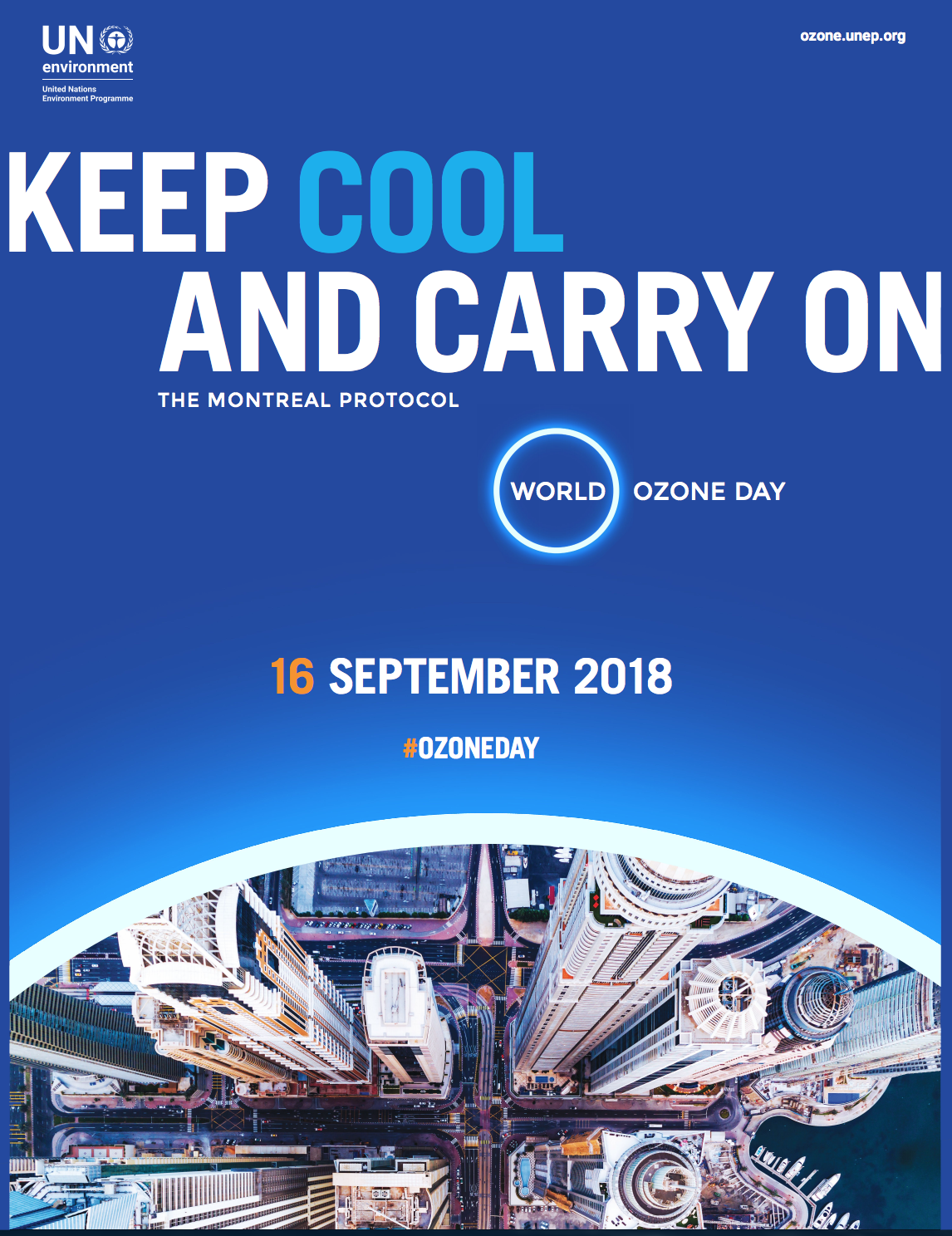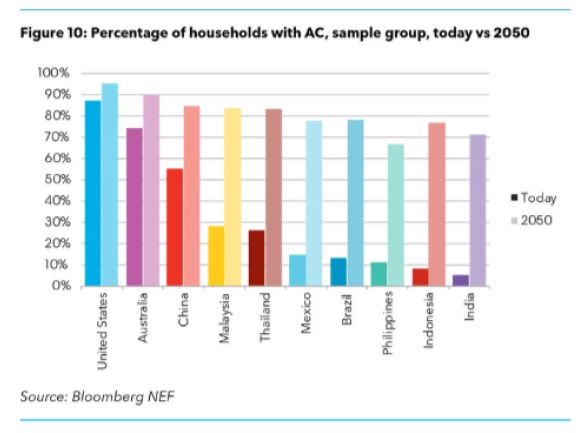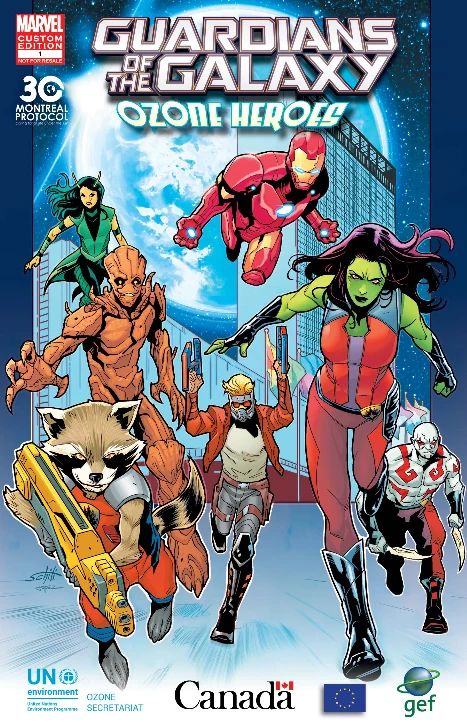Read the Chinese version of this blog
Blogging from the Commemoration event for the 2018 International Day for the Preservation of the Ozone Layer in Beijing, China.
Have you suffered heat stress this summer? If not, you were lucky. Depending on where you live and how wealthy you are, a sweltering and humid couple of days can either be an opportunity to catch up with paperwork in an air-conditioned room, or they can literally mean the difference between life and death. Too much heat can kill you.
Data from Chilling Prospects: Providing Sustainable Cooling for All, a report by Sustainable Energy For All, says that heat waves kill 12,000 people annually around the world, with the potential to reach up to 250,000 by 2050. Over 1.1 billion people globally face increasing risks from lack of access to cooling.
Every year, new heat records are set all over the world, and 2018 has been no exception. High temperatures and extreme heat waves were recorded from the Arctic Circle, Canada, and Scandinavia to North Africa, Iran, Japan, and India. Extreme heat affects both health and livelihoods, as vividly depicted in a recent New York Times article from New Delhi. In Japan, 65 people died in one week, and 22,000 were hospitalized. Soaring temperatures above 105 degrees Fahrenheit (40° Celsius) have fueled wildfires in Greece and California, killing hundreds of people.
Predictably, as heat rises, so does the demand to stay cool and use refrigeration.
Cooling equipment not only saves lives but also prevents food from spoiling by using cold supply chains, preserves vaccines effectively, and increases a population’s overall productivity. Loss of work undermines economic growth. The Chilling Prospects report says that by 2050, work-hour losses may be as high as 12 percent in the worst affected regions of South Asia and West Africa.
In highly populated countries that are either tropical or have a hot climate, a growing middle class is demanding air conditioning, no longer as a luxury but a necessity in hotter countries like India. Current estimates indicate the world is likely to add 700 million air conditioning units to global stocks by 2030.
What is needed now more than ever are cleaner, energy-efficient cooling options for everyone.

What are some solutions?
Firstly, let’s make sure we take advantage of the technology that is available. Thermal comfort can be improved by building smarter: more shade, better airflow, white roofs and more vegetation in cities can go some way. And where that is not enough, the technology for much more energy-efficient mechanical air conditioning already exists and can—with the right amount of political will, private sector ingenuity, and financial resources—be shared more widely and adopted by many. The good news is that the momentum to do so is finally here.
Secondly, the international community has shown that we can make progress if we put our minds to it. We have restored the ozone layer while reducing the impact on the climate since the Montreal Protocol came into effect thirty-one years ago. This landmark agreement created a roadmap for the gradual phase-out of all types of substances that destroyed the ozone layer: chemicals used in refrigeration, air-conditioning, foam manufacturing, aerosols, as cleaning agents and in fire extinguishing.
On January 1st of next year, the Kigali Amendment to the Montreal Protocol on Substances that Deplete the Ozone Layer will enter into force. This amendment specifically limits consumption and production of hydrofluorocarbons (HFCs), a greenhouse gas mainly used in air conditioners and refrigerators as a replacement of ozone-damaging refrigerants. The adoption of the Kigali Amendment in 2016 broadened the scope of the Protocol to also phase down HFCs, which are not ozone-depleting but have a strong climate effect.
Under the Kigali Amendment, 197 countries have committed to cutting the production and consumption of HFCs by more than 80 percent over the next 30 years. This effort has the potential to avoid up to 0.5°C of global warming by the end of the century. So far, the amendment has been ratified by 46 countries.
The recent IEA report on “The Future of Cooling” shows how a rapidly increasing cooling demand using current technologies has the potential to undercut the climate targets of the Paris Agreement – if nothing is done to reduce the need for air conditioning and make cooling technology much more climate-friendly.
We need to take up the challenge by aggressively promoting integrated approaches, such as better buildings, more efficient air conditioning systems, renewable energy-powered cooling, much more efficient cold storage and transportation systems.
As an implementing agency of the Montreal Protocol since 1991, the World Bank Group has channeled more than $1 billion in grants to developing countries to phase out the consumption and production of ozone-depleting substances. In doing so, the Bank has helped to avoid the equivalent of 1.3 billion tons of greenhouse gases (CO2e) escaping into the atmosphere. The Bank also supports local manufacturers like Saijo Denki of Thailand to adopt more environmentally-friendly refrigerant technologies and, in so doing, transforming the market and offering customers more affordable, efficient air-conditioners.
The research has been done: we know where the trend is leading. It is now high time for all of us – industry, governments, financial institutions – to take up the challenge and address the emerging cooling crisis. A revolution in cooling is possible: energy-efficient technologies are available and new, integrated cooling solutions are emerging. We now need a global plan of action to stabilize emissions from cooling so that we can achieve the Paris Agreement targets. The World Bank is more than ever committed to working with the public and private sectors to develop new solutions that will help us win the battle against a changing climate while also mastering the challenge of staying cool in a warming world.
Join the conversation!
Celebrate on social media the major accomplishments of the Montreal Protocol in protecting the ozone layer with the #OzoneHeroes campaign. Download the social media toolkit here and read the comic book created in collaboration with Marvel comics!



Join the Conversation